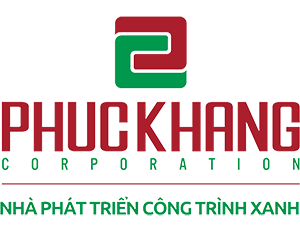As residents in the Mekong Delta brace for climate change due to global warming, they also have to be aware of another threat: the Mekong River is drying up following massive construction of dams and hydropower plants upstream leading to saltwater floods in future.
This dry season has not only been the hottest in the last decade but has also seen the most serious saltwater intrusion ever recorded in the Mekong -- 72 kilometers from the coast to just eight kilometers from Can Tho, the region’s main city.
In 2004 saltwater intruded up to 12 kilometers from the city.  Ky Quang Vinh, director of the Can Tho-based Center For Observation of Natural Resources and Environment said the reduction in the flow of water from upstream and changing of farming habits, including growing crops that waste water and raising livestock, were the cause.
Ky Quang Vinh, director of the Can Tho-based Center For Observation of Natural Resources and Environment said the reduction in the flow of water from upstream and changing of farming habits, including growing crops that waste water and raising livestock, were the cause.
The flow of water into Vietnam via the Tan Chau and Chau Doc gateways declined by 8.2 billion cubic meters last year to 415.1 billion cubic meters.
The river, which originates in Tibet, flows through Myanmar, Laos, Thailand, and Cambodia before being divided into the Tien and Hau rivers after entering Tan Chau and Chau Doc.
Chinese scientists have discovered 46,000 glaciers in the Tibetan highlands are scaling down 7 percent a year, while the deforestation upstream in China, Laos, and Thailand to build dams and power plants is drying up the river.
China’s 290-meter high Xiaowan Dam last year began a five-year operation to store 14 billion cubic meters of water.
The total water flow in the Tien and Hau Riversduring the winter-spring crop period last year was 1,600 cubic meters a second while demand was 1,700 cubic meters.
If China also carries out its plans to partially direct water from the river to its thirsty northern region, it will be a disaster for the Mekong Delta.
The quantity of silt carried by the water, which helps fertilize the Mekong Delta, plunged to 30-40 milligrams a liter during this dry season. Even during peak flow last year it was only 150 milligrams compared to 250-300 milligrams until 2000.
It may plummet by a further 70-80 percent soon as most of it is imprisoned in dams along the river, Nguyen Van Lap, chairman of the Ho Chi Minh City Institute of Resources Geography, said.
The water shortage has also worsened pollution in the region, with organic pollution doubling in the last decade to 14 milligrams a liter.
There is no greater threat to the future of people and the ecosystem in the delta than the upstream damming, Thoi Bao Kinh Te Sai Gon Online (The Saigon Economics Times Online) quotedRuth Mathews, WWF Vietnam Country Program Manager, as saying.
But China said last month the water shortage downstream was not caused by its dams but by less rain upstream, BBC quoted Boonchai Ngamvitrot, a Thai meteorologist, as saying after a visit to two large Chinese dams, including the Xiaowan.
China organized the visit for officials from four countries to prove this.
But the country is planning to build bigger dams on the Mekong in future, according to the BBC.
Asia is in the grip of a water crisis that could set back the region's robust economic growth if left unresolved, AFP quoted Arjun Thapan, special adviser to Asian Development Bank president Harukiko Kuroda on water and infrastructure issues, as saying.
"We believe that the estimate recently made about Asia having a 40 percent gap between demand and supply by 2030 is reasonable," he said.
"Unless you radically improve the rate of efficiency of water use both in agriculture and industry, you are not going to close the gap between demand and supply,"he warned.
By Thoai Tran
- City apartments sector heats up
- First urban railway route in Hanoi under construction
- Big public concern at road proposal U-turn
- HCM City set to streamline home ownership titles
- Skyscraper height records broken regularly
- Seoul Living in Ho Chi Minh City
- Imperial Citadel of Thang Long-Hanoi becomes 900th site on UNESCO World Heritage List
- Firms eye overseas real estate
- Downtown HCMC to restrict high-rise development
- HCM City says will prioritize road projects in next five years

























